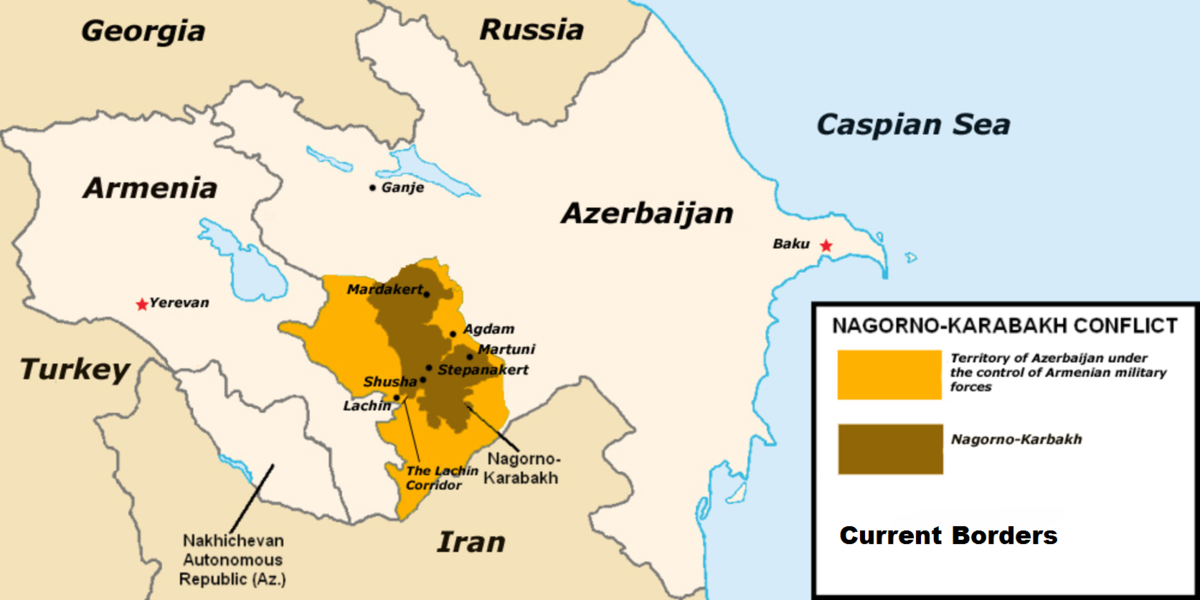Armenia and the other ‘Russia Collusion’
In what might be described as a stealth takeover, some analysts believe expansion-minded Russia is gradually taking control of the Republic of Armenia. Strangely, a distracted Washington is ignoring the move, and some US politicians are even helping. Here in Western Europe, there is reason to worry.
While everyone got upset about Russian attempts to annex Crimea, Eastern Ukraine, and South Ossetia (from Georgia), no-one is talking about Moscow’s gradual absorption of Armenia. Russia’s military assistance to Armenia has included the deployment of Iskander-M missiles. That puts western allies Turkey and Azerbaijan well within range. But Israel is in range too. And Russia’s cozy ties to Iran and Syria pose serious risks for another western ally, Saudi Arabia.
This ‘alters the balance’: Here we have Russia busy consolidating its influence in the Middle East, through its long-standing friendship with Iran and its support of the Syrian government. In recent days there has even been talk of Iran joining the Russian-dominated Eurasian Economic Union, creating a potential end run around western sanctions. The annexation of Crimea returned to Moscow unchallenged control of a warm water port enhancing naval strategic access to the Black Sea and the Mediterranean. Armenia is landlocked, so there’s no naval play there, but look who Armenia’s neighbours are: Georgia, Azerbaijan, Turkey and of course Iran.
In fact, despite having declared its independence in 1991, along with many other Soviet provinces, little Armenia (population: 3 million) has never really broken free from its dependence on Moscow. But these days it’s not even trying. Step by step it’s becoming a Russian satellite.
Russia has made serious inroads. A founding member of the Collective Security Treaty Organisation, NATO’s Russian-sponsored rival, the Armenian military is being heavily funded and supplied by Moscow. Armenia’s often violent dispute with Azerbaijan has seen extensive direct Russian involvement including training of the pro-Armenian forces by the Russian military.
In that war, Armenia succeeded in prying away from the pro-Western nation of Azerbaijan the region known as Nagorno-Karabakh which has a majority Armenian population. Under guidance from Armenia and Russia, the region formed itself into a separatist enclave similar to Crimea and Georgian lands now under Moscow’s rule, and has followed Armenia’s pro-Russian line.
Despite this, Armenia enjoys western support. Heavily lobbied by Armenian diaspora groups, some US politicians have aligned themselves with Armenian causes. In September, a Congressional delegation even visited the separatist region, over the objections of the US State Department and in the face of US refusal to recognise Nagorno-Karabakh as anything other than territory taken by force from neighbouring Azerbaijan.
One of the more outspoken members of the group was Democratic Congresswoman Tulsi Gabbard who, with a member of lobbying group Armenian National Committee of America (ANCA) at her side, declared: “The resilience and courage I witnessed in the people of the Nagorno-Karabakh region who remain in an ongoing conflict over their independence, further demonstrates our shared values of freedom, democracy, and self-determination.” Gabbard is of course widely known for her visit to Syria and voicing pro-Assad sentiments. No UN member country, including Armenia itself, has ever recognised Nagorno Karabakh’s legitimacy. But prompted by ANCA’s persistent lobbying, eight American states have done so – despite the obvious grievances of western defence ally Azerbaijan and despite strong evidence of Russian military trainers assisting the province’s rebel forces and increasing Russian assistance to Armenia itself.
Likely, only the half million Armenians in the U.S. are following these developments with much interest. But Armenia was under the hegemony of Moscow throughout the twentieth century as part of the Soviet Union and now it appears to be headed that way again. Moreover, Armenian-Americans should be concerned that ANCA has become a conduit for Russian money and influence. The fact that Armenia’s consul general in Los Angeles, the main fund-raising base for ANCA, is a Russian citizen and a Putin-connected oligarch with businesses worth billions in Russia speaks for itself. No wonder ANCA follows Moscow’s line of disrupting U.S. strategic efforts in Eurasia. For every Armenian-American, this should be of deep concern.
The question of whether the Armenian lobby is influencing official US policy remains to be seen. There were few clues recently while the president of Nagorno-Karabakh, which the Armenians call Artsakh, was in the US. This was Bako Sahakyan’s first visit to Washington as leader. In years past, Artsakh leaders have been wined and dined on Capitol Hill but officially ignored by the White House. The pattern appears to have been repeated this time, allowing US State department officers responsible to breathe a sigh of relief. But ANCA and its Congressional supporters are nothing if not persistent. European observers have come to understand, US foreign policy can change unpredictably, with a single presidential tweet.
Russia’s game here is to dominate the Caucasus region bringing it closer to its key regional allies, Iran and Syria. Should the Caucasus fall entirely under Russian control, it would mean de facto domination of the upper Middle East and pose a grave threat to Israel and Saudi Arabia.
But Americans are distracted and the Trump Administration appears distracted. Moscow, adept at filling such vacuums, is eager to build up its power in the region and Armenia is ripe for its picking.




